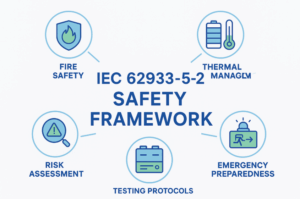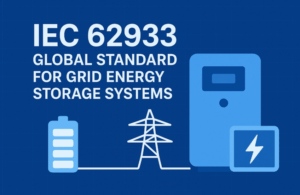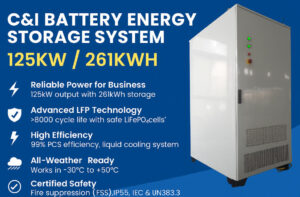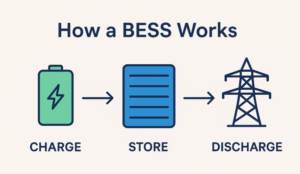An Inside Look at Japan & South Korea’s BESS Markets and Fire Safety Regulations
Powering the Future Safely
An Inside Look at Japan & South Korea’s BESS Markets and Fire Safety Regulations
The Booming BESS Markets
Driven by aggressive decarbonization goals and the need for grid stability, both Japan and South Korea are experiencing explosive growth in Battery Energy Storage Systems (BESS), creating significant opportunities for investment and innovation.
🇯🇵 Japan: Strategic Growth & Diversification
Japan’s market is maturing with strong government backing and diverse revenue opportunities, projecting a massive 32.1% CAGR for BESS-specific solutions.
Japan’s BESS market is forecast to surge, driven by both utility-scale projects and rapid residential adoption.
🇰🇷 South Korea: National Ambition & Global Leadership
South Korea is leveraging its dominance in battery manufacturing to fuel domestic growth and aims to capture 30% of the global BESS market by 2036.
The broader energy storage market in South Korea shows steady growth, underpinned by strong government tenders and EV adoption.
Key Driving Forces
While both nations share common goals of decarbonization and grid stability, their market expansion is fueled by a unique mix of specific policies, economic incentives, and technological demands.
Forces Propelling Japan’s Market
Aggressive Renewable Targets
Aiming for 36-38% renewable energy by 2030, requiring massive storage capacity.
Diverse Revenue Stacking
Markets for ancillary services, capacity (LTDA), and energy trading attract investors.
Local Mandates & Subsidies
Tokyo’s solar mandate and generous national/local subsidies de-risk projects.
Forces Propelling South Korea’s Market
Critical Need for Grid Reliability
Managing grid strain from rising demand and intermittent renewables is a top priority.
Rapid Electric Vehicle (EV) Adoption
Fuels demand for charging infrastructure and associated energy storage solutions.
Government-Led Tenders
Direct government procurement and long-term contracts provide market certainty.
The Critical Challenge: Fire Safety
The high energy density of lithium-ion batteries presents significant fire risks. Understanding these hazards is the first step toward implementing robust safety protocols and ensuring the sustainable growth of BESS.
Thermal Runaway
Uncontrolled heat release causing a cascading cell failure.
Toxic & Flammable Gases
Off-gassing can create an explosive atmosphere before a fire starts.
Stranded Energy
Post-fire shock and reignition hazard from residual energy.
Deep-Seated Fires
Fires within protective casings are difficult to access and extinguish.
The Regulatory Gauntlet
To mitigate fire risks, Japan and South Korea have established distinct but equally rigorous certification pathways. Navigating these frameworks is essential for market entry.
Japan’s Performance-Based Path
Japan’s framework allows for innovative, non-standard solutions, provided their safety and performance can be rigorously demonstrated to bodies like FESC.
South Korea’s Prescriptive Path
In response to past incidents, South Korea developed the specific KFS 412 standard, creating a clearer, more prescriptive path for BESS fire safety compliance.
The Global Language of Safety
While national regulations differ, both countries rely heavily on a common set of internationally recognized standards to form the technical backbone of their safety requirements.
UL 9540A
The key test method for evaluating thermal runaway fire propagation in a BESS.
NFPA 855
The standard for the safe installation of stationary energy storage systems.
IEC 62619
Safety requirements for rechargeable cells and batteries used in industrial applications.
IEC 62933
Covers the overall safety of Electrical Energy Storage (EES) systems and units.




